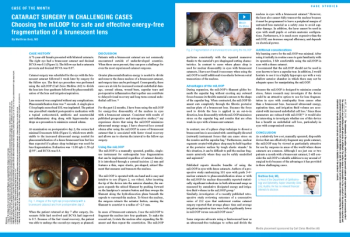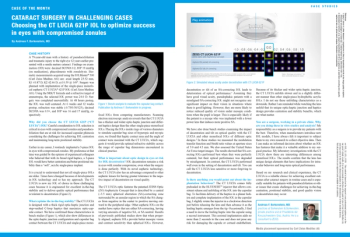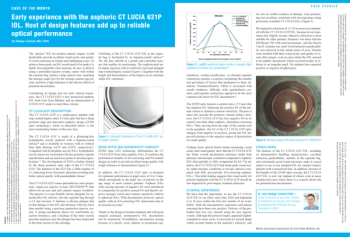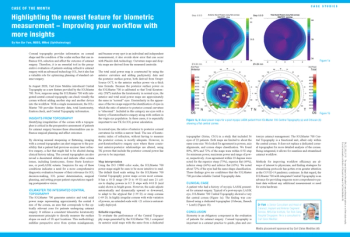
Articles



Dr. Valentina Sarao, Assistant Professor in Ophthalmology at the University of Udine, speaks about the new Fully Automated Fluorescein Angiography system by CenterVue: Eidon FA provides Ultra-High Resolution, Wide Field images and video to detect the slightest dynamic details of retinal blood flow.





Prof. Peter Szurman, Head of Department, Eye Clinic Sulzbach, Knappschaftsklinikum Saar, Germany speaks about the DMEK (re)evolution in corneal transplantation surgery and the future of GEUDER's DMEK cartridge for transportation and injection of pre-loaded and pre-cut Descemet lamellas.

Rohit Shetty, MD, Vice Chairman of Narayana Nethralaya Eye Institute in Bangalore, India shares his experience about performing lenticular extraction with the SCHWIND femtosecond laser.

Prof. Theo Seiler, MD, PhD, founder of IROC eye clinic in Zurich, Switzerland, talks about the future trend of lenticular extraction with femtosecond laser technology by SCHWIND eye-tech-solutions.



Increasingly, UWF imaging is becoming standard practice in diabetic retinopathy and retinal vein occlusion, as well as providing important insights into the management of retinopathy of prematurity and rare hereditary retinal vascular conditions.











With the advent of artificial intelligence (AI) systems now upon us, Mr Sameer Trikha discusses applications of AI for eye care providers and how he envisages this revolutionary technology will fit into the workplace.

There is a strong link between alpha-blocking medications and floppy iris.

Clear lens exchange with implantation of a trifocal IOL is the best solution.


Ophthalmologists around the world have been dedicating their time and expertise to deliver eye care services, including screening and surgery, in Cambodia, in an initiative supported by the Khmer Sight Foundation.


OCT-based biometers like the ARGOS allow for accurate measurement of very dense lenses in cataractous patients.
